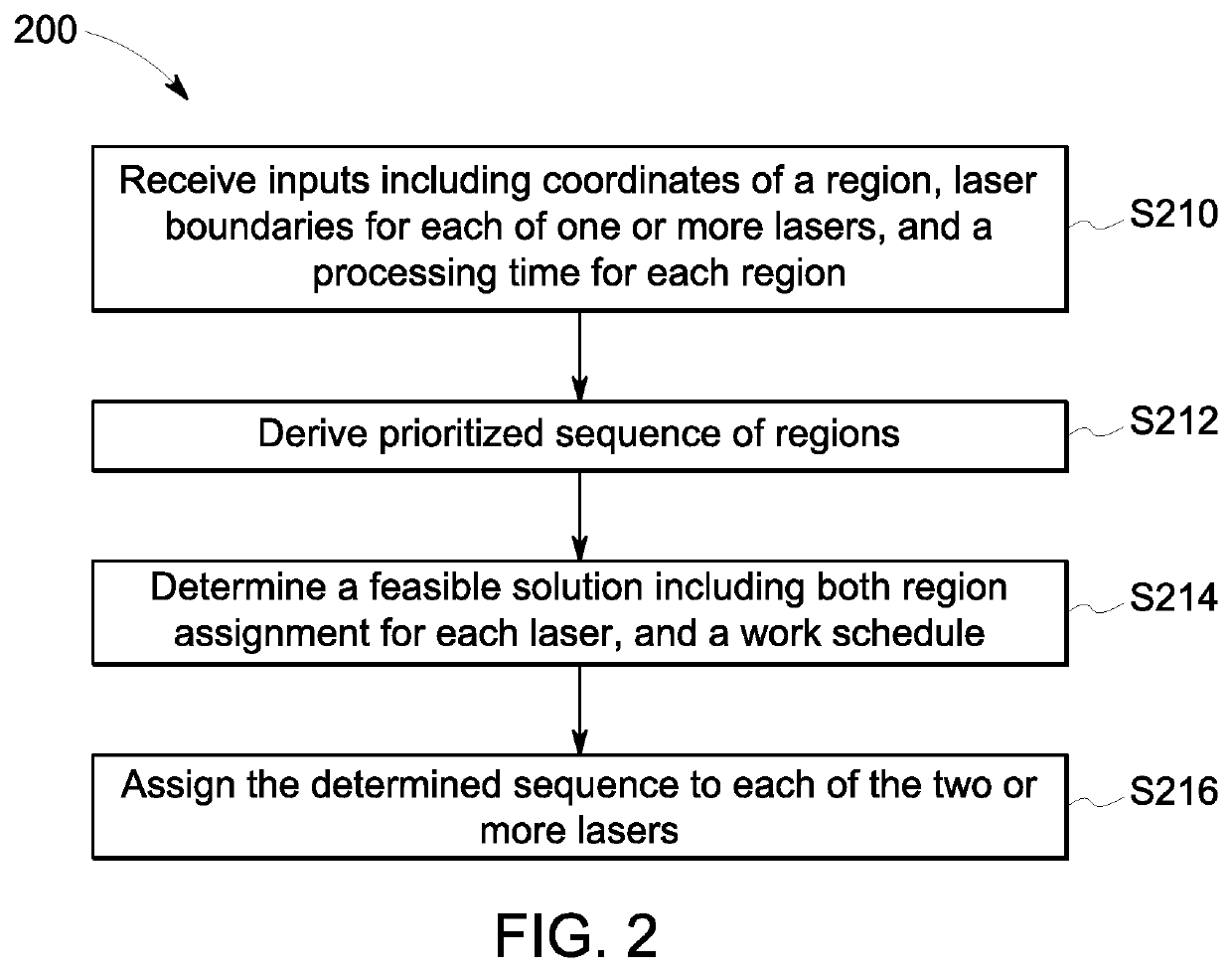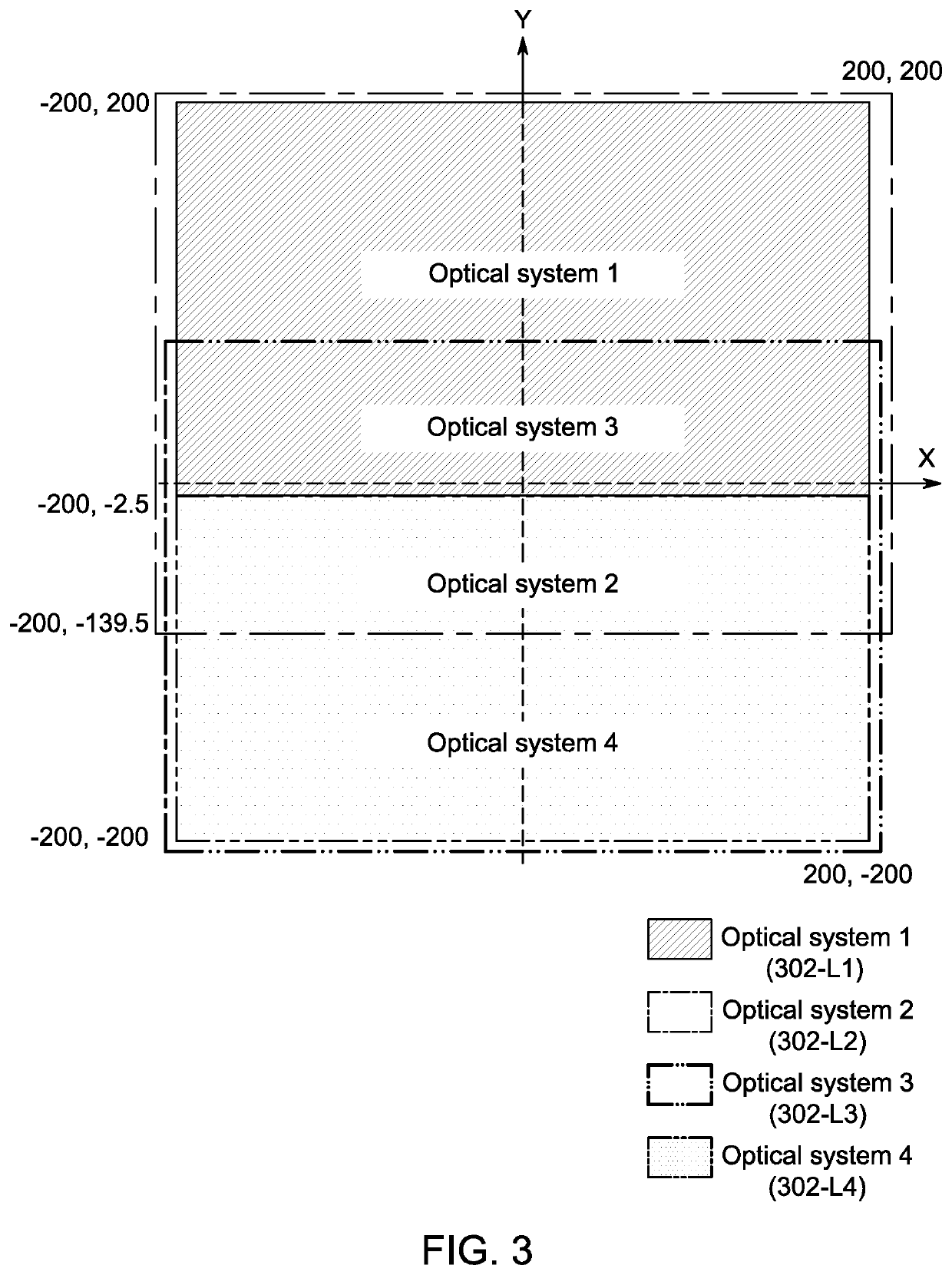Optimization approach to load balancing and minimization of build time in additive manufacturing
a technology of additive manufacturing and optimizer, applied in the direction of additive manufacturing processes, manufacturing tools, manufacturing data acquisition/processing, etc., can solve the problems of saving labor cost and time spent on manual or simple assignment development, and achieve the effect of reducing the overall completion time, increasing the throughput of the additive machine, and saving labor cost and time spen
- Summary
- Abstract
- Description
- Claims
- Application Information
AI Technical Summary
Benefits of technology
Problems solved by technology
Method used
Image
Examples
Embodiment Construction
[0018]An example of an AM process is called powder-based melting. In this technology, laser beams are used to melt powdered grains of material on a build plate (“material”) to build one or more parts, layer-by-layer in a controlled three-dimensional space. The material may be, for example, polymers, metals, ceramics, etc. Other suitable materials may be used. To achieve high throughput for a large build area, multiple lasers may work in parallel. Each laser may have a defined scan field boundary (e.g., an area that may be exposed to the laser). There may be overlap in the defined scan field boundaries between two or more lasers. As it is undesirable to have two or more lasers contact the same material on the build plate, when laser scan field boundaries overlap, the lasers may take turns, so that while a first laser is exposing the material to the laser beam, a second laser is idle, for example.
[0019]It is also noted that in some instances a first area of a build plate may have a lo...
PUM
| Property | Measurement | Unit |
|---|---|---|
| size | aaaaa | aaaaa |
| lag time | aaaaa | aaaaa |
| time | aaaaa | aaaaa |
Abstract
Description
Claims
Application Information
 Login to View More
Login to View More - R&D
- Intellectual Property
- Life Sciences
- Materials
- Tech Scout
- Unparalleled Data Quality
- Higher Quality Content
- 60% Fewer Hallucinations
Browse by: Latest US Patents, China's latest patents, Technical Efficacy Thesaurus, Application Domain, Technology Topic, Popular Technical Reports.
© 2025 PatSnap. All rights reserved.Legal|Privacy policy|Modern Slavery Act Transparency Statement|Sitemap|About US| Contact US: help@patsnap.com



